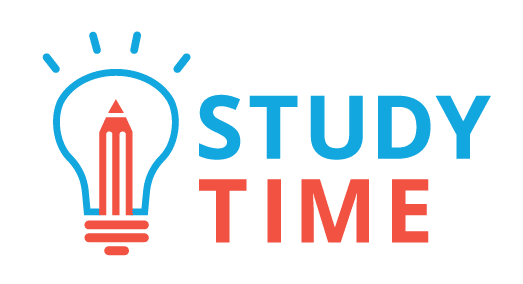Have you ever seen a really good diagram in class, and it just made so much sense? Maybe you even thought to yourself, “Gee, maybe I’m a visual learner”? Or, on the other hand, have you read a really well-written textbook, and started to wonder if you can only learn things through reading?
We’re going to cut to the chase here, and it’s a hard no to both of those things. Learning types, or learning styles, are a big ol’ myth that have never done anything nice for anyone. In fact, if you use them, they might even be making your life harder.
This article is going to break down why learning styles aren’t real, why they suck, and what you can do instead. First, let’s start off by learning a little bit about learning types.
What “learning types” are, and where they’ve come from
Learning types have been around for decades, and they’ve evolved a lot over the years. There’s a whole lot of ways people have divided up learning types, too – some people reckon there’s only three learning types, others have said there’s as many as seven, if not more!
No matter what, though, learning types are essentially just a specific way that certain students are supposed to learn. We’ll get onto some specific examples soon.
One of the most common models of learning styles was created by the New Zealander Neil Fleming. Neil’s deal was that he noticed some teachers were arguably bad teachers, but still managed to engage all of their students. Meanwhile, objectively good teachers were hitting the nail on the head for some students, but completely missing others.
To explain this quirky situation, Neil came up with learning types. He reckoned that the “bad” teachers were appealing to their students’ specific learning types, hence why they could engage so well with them, even though they couldn’t really teach. But Neil didn’t stop there – Neil came up with a detailed framework which, he believed, could explain the whole bad vs. good teacher situation.
The VARK Model
Perhaps Neil’s biggest achievement, the VARK Model was published in 1987. The model is still widely used today, and comes with questionnaires and resources designed to help students find and use their “learning types”.
You might be wondering – what even is a learning type?
Well, that’s exactly what “VARK” tells us! Specifically, it stands for;
- Visual
- Auditory
- Reading and writing
- Kinesthetic
According to Neil, and many other education researchers, every student can fit into one of those types of learners. You might have even been assigned one of those categories by your teacher, or by yourself.
If you’re unfamiliar with what these learning styles are, we can break down how each style is supposed to learn best.
Visual learners
Essentially, visual learners learn through what they see, whether it’s something they read, a graph, or a diagram. They like drawing things, colour coding their notes, and watching videos. However, they struggle with spoken directions and instructions, and find podcasts and interviews difficult to follow.
Auditory learners
Auditory learners are the complete opposite of visual learners. They like videos, too, as long as it’s accompanied by a spoken aspect. They’re good talkers and listeners, and find it easier to remember things if they can repeat them out loud. Unlike visual learners, auditory learners aren’t the best at reading, and are not as strong with interpreting maps or diagrams.
Reading and writing learners
Very similar to visual learners, reading and writing learners are all about organised notes and colours. They like to work through a textbook and summarise information, and are good at making presentations. Similarly to auditory learners, reading and writing learners struggle with using diagrams and graphs in their learning.
Kinesthetic learners
These guys are our “hands on” category. They enjoy anything tactile, from drawing and building to doing science experiments during class, and typing can help them to learn more effectively. Kinesthetic learners can struggle with short attention spans, poor focus in classroom settings, and aren’t the best listeners.

So, now that we know what learning types are, we can get onto their (many) problems.
Why learning types are an issue
Learning types are problematic for a lot of reasons. Despite somehow finding their way into every school that’s ever existed, learning types do absolutely nothing for your education. In fact, they might even be making things harder. Here’s why.
There’s no evidence that they work
This is maybe the craziest thing about the whole “learning types” situation. Despite so many students and teachers believing in them, nobody has managed to produce solid research that says they do anything useful.

While a lot of people have attempted to generate evidence backing up learning styles, nobody has managed to get there. The few studies that have claimed to find a link between students using their preferred learning style and better test grades have not been statistically sound. This means it’s likely that any test score improvements were due to chance, not because the learning styles were helping them out.
Not to mention, learning styles can make your learning worse
Let’s take an example for this one. Imagine you’re a biology student studying the structure of the human body, and you believe that you’re a reading and writing learner. According to Neil (remember him?), you’re only going to learn anatomy by reading about it, because that’s how your learning type learns. You don’t bother to look up a diagram, since Neil says you won’t be able to interpret it anyway.
We’re sure we don’t have to say this, but Neil is seriously wrong.

Learning is most effective and efficient when we use lots of different learning techniques together. Imagine how fast you could wrap your head around the human skeleton if you could read a textbook on it, watch a video about it, and get your hands on a skeleton model. Checkmate, Neil.
Also, they just make you feel bad!
A lot of the time, learning styles are effectively categorising you based on what you can’t do. As well as that, irrelevant stereotypes (like that kinesthetic learners don’t know how to focus) get attached to every learning style. Being told that you aren’t good at reading or writing just because you prefer looking at diagrams every once in a while isn’t all that nice.

Not to mention, a lot of students turn to learning types as a solution to all of their problems. After getting through school not knowing how to learn, getting told “oh, you’re just a visual learner!” can feel like the light at the end of the tunnel. For a lot of people, discovering their learning type can initially be a huge relief.
But remember when we said learning types do absolutely nothing for your education? Imagine how demotivating it is when, even when you do all the visual learning your brain can handle, your grades don’t improve. Turns out that the light at the end of the tunnel was just a train. Ouch.
And you might be wondering, why are learning types so popular?
Good question. Despite there being no evidence that learning types do anything good, yet quite a lot of reasons why they’re bad, they just won’t die. There’s a few answers for this, but we’ve narrowed it down to two big reasons. The first:
A scary number of teachers love learning types
You know those teachers that are meant to improve your education? They’ve been doing you dirty this whole time.
We’re not saying all teachers support learning types, but according to Frontiers in Education, a whopping 90% of educators believe in learning styles, and 80% intend on incorporating them into lessons. Essentially, it’s teachers that are keeping the legacy alive, totally unaware that they’re hurting their students in the process.
In fact, learning types are an example of something called pseudoscience. Basically, pseudoscience is where a whole lot of people believe in something, despite there being no good evidence that it exists. As we mentioned earlier, any time learning styles have ever been proven effective, the studies are never statistically reliable, so we can’t be sure they work.

The other people we have to blame are ourselves
At their core, learning styles are categories we can slide ourselves into that provide us with a sense of order. Humans are about as weird as you can get, and we really like to box ourselves into certain categories because it feels like it makes life easier. Deep down, a lot of people really like stereotyping themselves.
The sense of order that comes with putting yourself into a learning type appeals to human nature. Deep down, we feel like if we can just call ourselves by the neat title of visual learner, we’ll know exactly how to study, our grades will be perfect, and life will be great. Of course, learning types do not hold all of the secrets to perfect revision, and are generally a waste of everybody’s time.
Still, we just love labelling ourselves, so we keep on using ‘em. But what can we do instead?
How to tailor your learning to your preferences, without learning types
We’ve spent all this time bashing learning types, and things have gotten pretty intense. If you’ve spent all your life believing you fit into a certain category, we know you’ll be feeling pretty shaken up.
We’ve already established that just using one mode of delivery when learning stuff isn’t going to work. So, we’ve got some suggestions for kicking your learning up a gear by using lots of different learning methods at the same time.
Improve your reading comprehension through the SQ3R method
Ever tried to tackle a textbook chapter on a confusing topic, and gotten so overwhelmed you couldn’t take a single thing in? The SQ3R method might be just what you need. It’s a heavy-duty comprehension booster that works for everything from podcasts, articles, and even equation-based problems (we’d never forget about you, maths students!).
SQ3R stands for;
- Survey
Read the introduction and/or summary to your textbook chapter, or at least the first couple of paragraphs. Alternatively, skim through all of the equations in full, and get a sense of where your calculations are going and what the final answer is going to tell you.
- Question
Write a quick list of everything you can think of that’s confusing. Don’t understand why they multiplied instead of divided? Or perhaps you still don’t know the difference between hypertonic and hypotonic solutions? Jot it all down. Being confused is all part of the process.
- Read
Work your way through your notes, article, or podcast, constantly trying to think back to your initial impressions and questions from the first two steps. Do you feel like you’re getting the point of your article or calculations more as you go? Are you starting to answer any questions?
- Recite
As you read, pause yourself every so often to paraphrase what you’ve just read. This is a really hard step, and takes a lot of mental gymnastics, but it has the biggest pay-off. After every big paragraph or long sentence, try to verbally explain what the author has just said.
- Review
Once you’re done with your reading and reciting, grab some note-taking supplies and build up your review. This is essentially writing a summary of everything you’ve read, including any key definitions or concepts, all in your own words.
While SQ3R is an intense way to study, and takes a whole lot of focus, it will make you understand material better than any learning type ever will. It forces you to actively recall large amounts of content at a time, which is basically the best ever brain workout. Practising these skills now will be a lifesaver during exam season.

Try the Feynman technique
We know the SQ3R method is a lot to focus on, especially if you’re not used to intense study seshes. For something a bit more lowkey, but equally effective, give the Feynman technique a go.
It relies on just four key steps;
- The first is to study. Yes, literally just go and study however you like. Read articles, complete practice questions, whatever. This first one’s totally up to you.
- Next, teach it back to someone else. This could involve teaching it to a mate, or pretending you’re a teacher telling an imaginary class all about your topic.
- This almost always points out the areas that you don’t understand so well, so now, try to fill in the blanks. Do some more study, but this time, just focus on the areas you know you can’t explain well. Move onto the next step only when you know you’re all up to speed.
- Finally, simplify. Activate all of the areas of your brain by drawing diagrams and graphs, as well as writing notes and summary paragraphs. Doing so will force you to connect concepts and cut out unnecessary ideas. This makes your brain way more prepared to tackle the complicated questions NCEA throws at you.
Use interleaving practice
Interleaving practice is the perfect opposite to learning styles, and that’s why we love it. Interleaving practice is all about jumping between different study methods as well as different topics to keep your mind active.
Using interleaving practice might look like alternating brainstorming about themes for your English essay, and then brainstorming about characters, then language techniques, and back to themes again. If you’re into maths, you might use interleaving practice by switching between merit and excellence level questions, or lots of merit level questions on different topics.
We don’t have to stop there, either! Interleaving practice works best when you combine different learning types at once. So, when you’re doing those maths questions, feel free to chuck on a video explanation, read your textbook, draw some graphs, and really switch things up.

By forcing your brain to go from thinking in visuals to thinking in words, about lots of different topics, it’ll be easier to learn things in the first place, and you’ll find it easier to remember what you’ve been studying.
To round things off
Types of learners aren’t your friend, and they never have been. Sheesh, they don’t even exist.
2022 is not the year for wasting your time trying to find out if you’re worse at diagrams or reading, so just leave learning styles in the past altogether. Focus on evidence-based study strategies like the Feynman technique or interleaving practice. Your NCEA results will thank you for it.

0 Comments